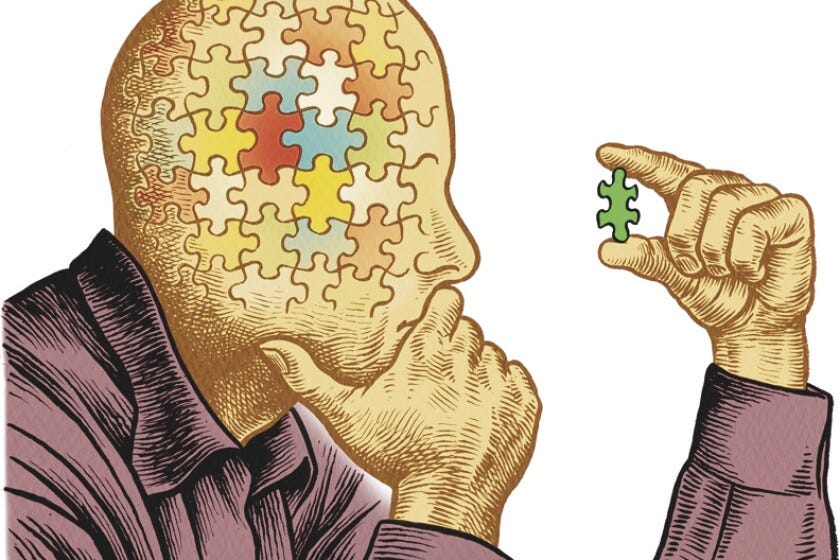The Crucial Role of Critical Thinking in the Age of AI and Subjective Realities
Unraveling Subjective Realities and Outsmarting Cognitive Biases in the Age of Artificial Intelligence
Dear NeuroEvolution Community,
In an era where information is abundant and AI systems are increasingly sophisticated, Henry Ford's words resonate more than ever: "The ability to know how to get the information is more important than using the mind as a garage of facts." As we navigate this complex landscape, our capacity for critical thinking becomes our most valuable asset—especially when we consider the subjective nature of our individual realities.
The Lens of Subjective Reality
Before we delve into the challenges of the AI era, it's crucial to recognize a fundamental aspect of human cognition: we all perceive the world through the lens of our own subjective reality. This "reality" is shaped by our experiences, beliefs, cultural background, and the information we're exposed to. In essence, each of us lives in a unique perceptual world, interpreting inputs in ways that can differ significantly from others.
This subjectivity plays a pivotal role in how we process information, make decisions, and interact with AI systems. It underscores the importance of critical thinking as a tool to navigate not just external information, but our own internal biases and assumptions.
The Human Edge in an AI-Driven World
While AI continues to advance, our unique advantage lies in our ability to think critically within the context of our subjective realities. However, this capacity can be compromised by cognitive biases and social dynamics that shape our perceptions and decisions.
The Pitfalls of Group Dynamics
Two phenomena particularly relevant in our interconnected world are:
Group Polarization: In group discussions, people often shift toward more extreme positions than they initially held. Social media algorithms exacerbate this by creating echo chambers, reinforcing our subjective realities and reducing exposure to diverse perspectives.
Groupthink: The tendency for groups to prioritize harmony over critical analysis can lead to flawed decisions, especially when group members share similar subjective realities.
AI-Assisted Decision Making: Navigating Multiple Realities
Recent research sheds light on the complexities of human-AI collaboration in decision-making processes. The paper "Deciding Fast and Slow: The Role of Cognitive Biases in AI-assisted Decision-making" reveals crucial insights:
Human decision-makers often rely too heavily on AI predictions due to cognitive biases, which can reinforce their initial perceptions rather than challenging them.
Anchoring bias, where initial AI-generated predictions influence subsequent human judgments, plays a significant role in shaping decisions.
Increasing decision-making time can help mitigate anchoring bias, allowing humans to step back from both AI predictions and their own interpretations. The research suggests that this strategy is particularly effective when the AI is uncertain about its predictions.
Key Takeaways for AI-Human Collaboration:
Time Matters: Allocating more time for decision-making, especially in cases where the AI has low confidence, can improve the accuracy of human-AI collaboration.
AI Confidence Levels: The effectiveness of human adjustments often depends on the AI’s confidence in its predictions. Being aware of this can help human decision-makers better allocate their attention and time.
Ongoing Challenge: While strategies like time allocation show promise, further research is needed on how various cognitive biases impact our interaction with AI assistance and to develop more robust collaboration framework.
Key Takeaways 📌
Cultivating Critical Thinking in the AI Era
To leverage the power of AI while maintaining our cognitive edge and expanding beyond our subjective realities:
Question AI Outputs and Your Own Assumptions: Approach both AI-generated information and your initial reactions with healthy skepticism.
Diversify Perspectives: Actively seek out viewpoints that challenge your subjective reality, the AI's recommendations, and group consensus.
Practice Metacognition: Reflect on your thinking processes, potential biases, and the factors shaping your subjective reality.
Allow Time for Reflection: When making important decisions, give yourself time to process AI inputs and examine your own perceptual filters.
Understand AI Limitations and Human Subjectivity: Recognize what AI can and cannot do, and be aware of the limitations of your own subjective viewpoint.
Looking Ahead
As we continue to explore the fascinating intersection of human cognition, and artificial intelligence, remember that your ability to think critically and question your own perceptions remains irreplaceable. In future newsletters, we'll delve deeper into strategies for creating more effective human-AI partnerships.
Stay curious and keep questioning—especially your own assumptions,


